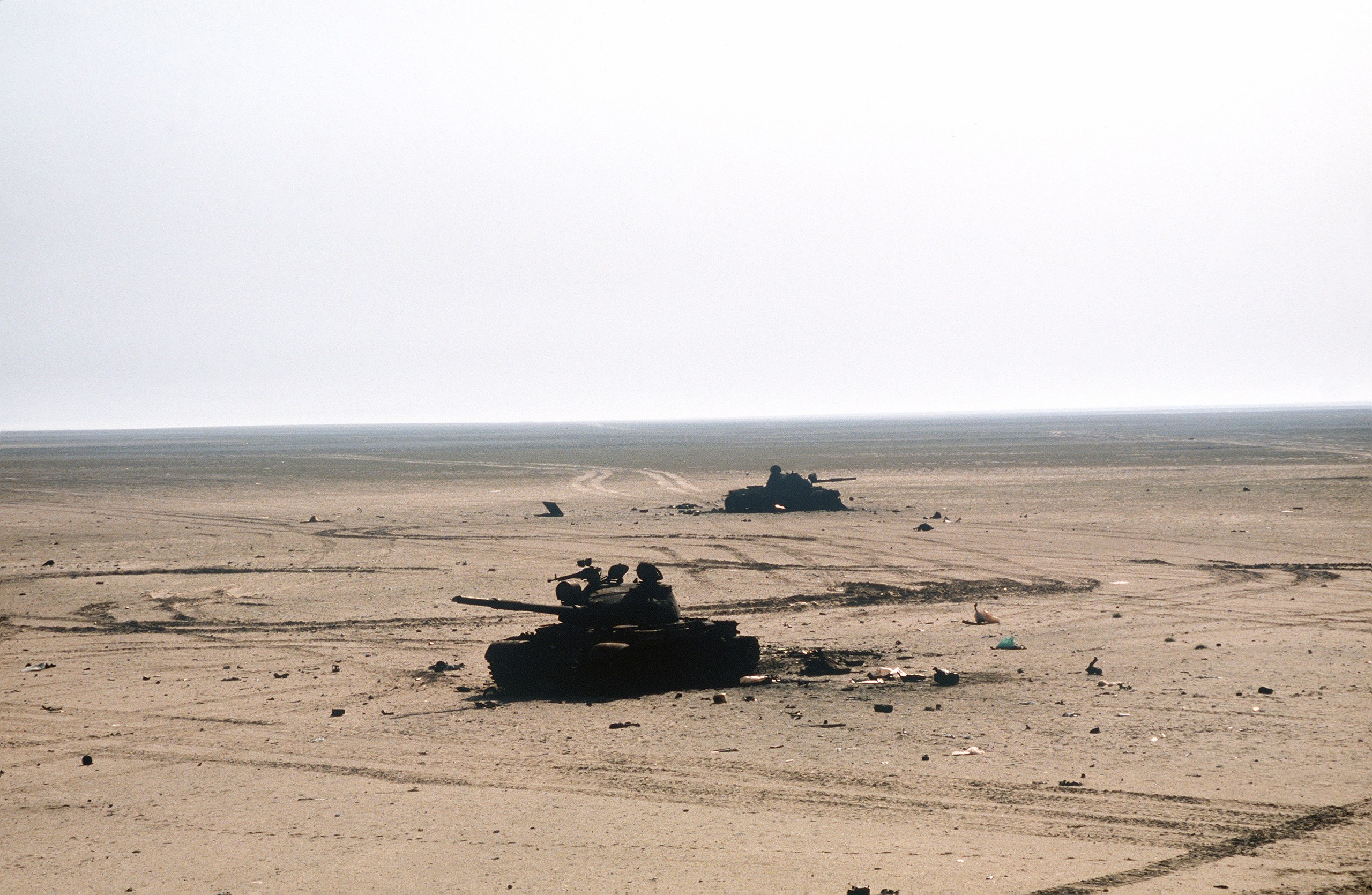During Operations Desert Shield and Desert Storm, the US military was at its finest, liberating Kuwaiti civilians from the forces of an evil dictator. In every way, every branch of the military and every American ally was on display, showing they could handle anything the enemy might throw at them and coming out on top.
Nowhere was this more apparent than in the ranks of U.S. military armor. Between the Army and the Marine Corps, the battles fought during Operation Desert Storm were some of the largest tank battles the United States ever fought – and among the largest in world history.
These 4 US military’s largest tank battles came during the Gulf War
The Battle of Kuwait International Airport
The biggest tank battle in United States Marine Corps history is also the fastest. It’s also one of the most forgotten battles in history, despite the massive size of the forces involved. On Feb. 25, 1991, the 1st Marine Division and 2nd Marine Division, along with the Army’s 2nd Armored Division’s Tiger Brigade, Army Special Forces, and – later – the 4th Marine Division’s 4th Tank Battalion met 14 Iraqi divisions and a field artillery brigade.

The 1st Marines had broken through the Iraqi lines and into Kuwait City, on its way to the airport drove through them and ahead, fighting skirmishes along the way and destroying at least 100 enemy tanks. The 2nd Marine Division would approach from the other side.
One tank unit, Bravo Company, 4th Tank Battalion woke in the morning to find 35 Iraqi Republican Guard tanks moving to hit them from the front. Outnumbered 3-to-1, the Marines of Bravo Company snapped to, destroying all of them in about 90 seconds. This battle came to be known as the “Reveille Engagement.”
2. The Battle of 73 Easting
A young Army officer named H.R. McMaster (yes, that H.R. McMaster) was leading a group of nine M1A1 Abrams tanks through the desert at the start of the Desert Storm ground war. Soon, his tanks came over a hill – and right into the path of an entire Iraqi tank division.
When outnumbered by hundreds, many officers would withdraw or surrender. McMaster plowed through. His troop destroyed 28 Iraqi tanks, 16 personnel carriers and 30 trucks in 23 minutes. They called in other tank troops as they fought and were soon joined by more Americans, more than 840 armored vehicles in all. With the Iraqis knocked out, the Americans were free to engage behind the lines and onward into Kuwait.
3. Battle of Norfolk

What happens when American and British Armor meet the Iraqi Republican Guard inside Iraq? Some 1,100 Iraqi tanks destroyed, along with hundreds of artillery pieces and armored personnel carriers and thousands of Iraqi prisoners. With 12 divisions on the battlefield, this was the second largest tank battle in U.S. history and the largest of the Gulf War.
Two hours after the Battle of 73 Easting, coalition forces advanced to Objective Norfolk, an intersection on Iraqi supply lines and an important hub for moving material. Defending Norfolk was the Tawakalna Division of the Iraqi Republican Guard, which had just been bloodied at 73 Easting. By the time the U.S. Army’s 1st Infantry Division controlled Norfolk, the Tawakalna Division ceased to exist.
4. Battle of Medina Ridge
For two hours, the U.S. Army’s 1st Armored Division and the 2nd Brigade of the Iraqi Republican Guard Medina Luminous Division slugged it out at one of the Iraqi desert’s few landmarks. Around 348 M1A1 Abrams tanks met hundreds of enemy tanks in one of the toughest battles of the war.
The Iraqis, positioned behind the ridgeline, could only be seen directly when U.S. tanks crested the hill. Which would have been an effective defense if it weren’t for the Army’s Apache helicopters and the Air Force A-10 Thunderbolt IIs constantly strafing them. The Iraqis arguably put up the stiffest defense of the war at Medina Ridge, but the loss was still lopsided – 4 U.S. tanks were destroyed while the Iraqis lost 186.

























